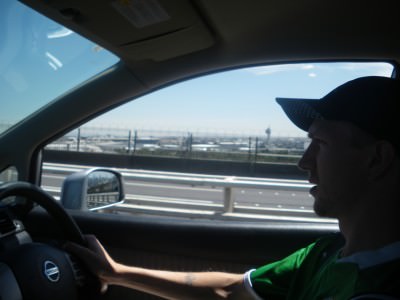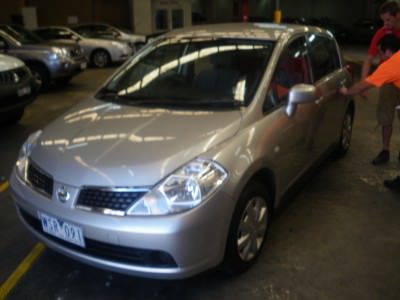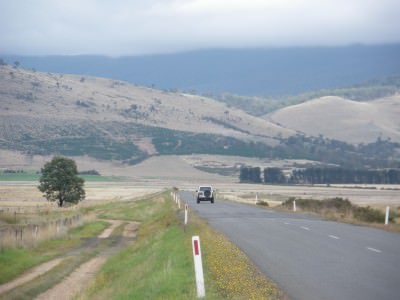Driving is a regular part of most of our lives. We drive from home to work and from work to home on almost any given day – yes even I did that as a long term backpacker! For parents, there is the inevitable daily drive to school with the kids and also for sports and other extracurricular activities. One thing that is for certain is that, once you’ve taken your vehicle out on to the road, there are numerous possibilities and hazards that can present themselves. Whether it is engine trouble, battery trouble or a traffic accident, no driver can tell when they will find themselves in some type of roadside predicament. Tuesday’s Travel Essentials tells you to be prepared for these things…
Keeping an emergency travel kit on hand is really just as important as making sure there is gas in the tank. Even the modern age of cell phones, the idea of finding yourself stranded, and unequipped, in the middle of nowhere, and in the dead of night is enough to give even the most veteran driver chills. The majority of conscientious drivers already keep some type of emergency travel kit in the trunk of their vehicles. However, in many cases, once the travel kit has been placed there, it is left alone until it becomes necessary. It’s a good idea to take stock of everything you have in your travel kit, make sure everything is still in working order, and that you truly have enough essentials to get you through a variety of emergency situations. I’ve been stranded in Tasmania before, all part of the journey my friends.
So, what are some key items that you should always keep in your travel kit? Because of the nature of an emergency, it’s impossible to know exactly when you’re going to need a certain item. As a result, it’s impossible to create a list in order of importance. Therefore, the items listed below should not be seen as being any more or less essential than the others, even the Wi-fi! (Travel bloggers note).
1. Jump Leads are an absolute must to have in any emergency roadside kit. You never know when your battery may die and there is always the possibility of accidentally leaving the lights on somewhere overnight. For the most part, people will be more than willing to help jump your battery in your time of need – provided you have cables that will reach from their battery to yours.
2. Wifi What? How is wifi an emergency? It just is, well at least for me!! I was able to blog from my car because I bought one of those USB Wi-fi sticks that you top up. Believe it or not, I updated this very blog from my tent and my car during March – June 2010. Amazing.

Wifi and electric in my car?? Yes I was blogging from the driver’s seat. I lived in my car for about 4 months.
3. Tyre repair kit and inflator. A slow leak in a tyre can creep up on you out of nowhere. It can also be caused by something like a nail or thorn in the wall of the tire which can become dislodged while driving. It’s all too common an occurrence that someone goes to leave their office after a gruelling day and they find one of their tires is completely flat. There are a variety of options available at your local car parts store for repairing a slow leak or single puncture in a tyre. Keeping both a gel based aerosol leak repairer/tyre filler and an actual tyre repair kit in your emergency kit will protect you against a variety of flat tyre related circumstances.
4. Glow sticks. Although it may seem like keeping a flashlight in your kit is the end all solution for late night roadside car work, people seldom think of how AA batteries can die or corrode over time. While it’s not necessarily a bad idea to keep a flashlight on hand (with the batteries in a separate compartment), keeping a few glow sticks available will ensure that you have light to work by no matter what the problem is.
5. Some kind of Tool Kit. Now, while doing real mechanical work on a vehicle there is a huge variety of tools that are needed, but keeping just a few basics in your emergency kit will prove to be surprisingly helpful in a variety of circumstances. A standard sized Phillips and flathead screwdriver, a pair of pliers and a wrench can go a long way in a bind. Hammer too.
6. Flares are also important to keep on hand in the event of a late night traffic accident. Flares will ensure the visibility of your car to prevent oncoming traffic from causing further damage to your vehicle and to your night. A bit crazy I know but the car I bought in Australia already had some.
7. Jack and Spare Tyre. Although these can’t necessarily be considered part of an ‘emergency travel kit,’ it’s critical that you have a car jack, an appropriately sized wrench, and a spare tyre on hand in your vehicle.
8. An electric charger/Power Adapter. You can charge your laptop, phones and hell even have a fridge with you. It plugs into the cigarette lighter and can even connect up to two sockets. Don’t use it when the car’s engine is off though – it will drain it! I used this to some effect in Tasmania. I could easily live in my car.
That’s it for today folks – With my endless travel tips and stories, I want to inspire you all to head out there and see the world! Check my advertising page if you have an idea for a product for my Tuesday’s Travel Essentials, and don’t forget I welcome free computers, and cars…




